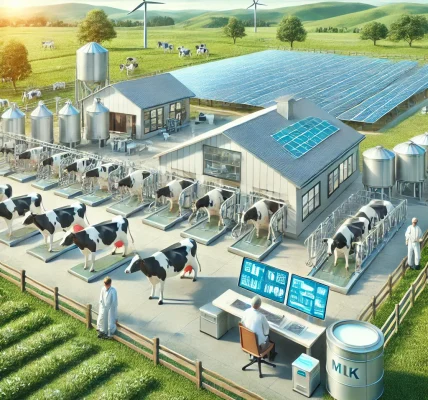Introduction
Agriculture is a crucial sector for many economies, providing food security and livelihoods to millions of people. However, farming is highly vulnerable to natural disasters such as droughts, floods, cyclones, and pests. To mitigate these risks, the government offers various crop insurance schemes to protect farmers from financial losses and ensure agricultural sustainability.
In this blog, we will explore crop insurance schemes, their benefits, eligibility criteria, and application process, and how they help farmers recover from unexpected disasters.
What is Crop Insurance?
Crop insurance is a risk management tool designed to compensate farmers for losses due to natural calamities, extreme weather conditions, and pest attacks. These schemes help farmers recover financially and encourage them to invest in better farming practices without the fear of complete loss.
Objectives of Government Crop Insurance Schemes
The primary objectives of crop insurance schemes are:
- Financial Protection: Compensate farmers for crop losses due to natural disasters.
- Encourage Investment: Promote better farming techniques and modern agricultural practices.
- Ensure Stability: Provide financial security to farmers and stabilize their income.
- Enhance Food Security: Ensure continuous agricultural production despite adverse conditions.
- Reduce Dependence on Loans: Prevent farmers from falling into debt traps due to crop failure.
Major Government Crop Insurance Schemes
1. Pradhan Mantri Fasal Bima Yojana (PMFBY)
- Launched: 2016
- Objective: Provide comprehensive crop insurance against natural disasters, pests, and diseases.
- Key Benefits:
- Low premium rates (2% for Kharif crops, 1.5% for Rabi crops, and 5% for horticultural crops).
- Covers losses due to droughts, floods, cyclones, landslides, and pest attacks.
- Compensation for pre-sowing and post-harvest losses.
- Faster claim settlement through technology-driven assessment.
- Eligibility:
- All loanee farmers (farmers who take agricultural loans) are automatically covered.
- Non-loanee farmers can voluntarily opt for the scheme.
- Farmers must be registered under the State Agriculture Department.
2. Restructured Weather-Based Crop Insurance Scheme (RWBCIS)
- Objective: Provide insurance based on adverse weather conditions affecting crop yield.
- Key Benefits:
- Covers losses due to extreme temperature, rainfall variations, humidity, and wind speed.
- Quick claim settlement based on weather data rather than physical loss assessment.
- Reduces risk for farmers growing weather-sensitive crops like fruits and vegetables.
- Eligibility:
- Available to all farmers, including tenant farmers and sharecroppers.
- Farmers must be registered with the designated insurance provider.
3. State-Specific Crop Insurance Schemes
Some states offer additional crop insurance schemes tailored to regional needs:
- Maharashtra: Mahatma Phule Krishi Sanjivani Yojana
- Tamil Nadu: Tamil Nadu Crop Insurance Scheme
- Rajasthan: Raj Sahkar Fasal Bima Yojana
How to Apply for Crop Insurance
Step 1: Check Eligibility
- Visit the State Agriculture Department website or local Krishi Vigyan Kendra (KVK).
- Confirm which scheme is available for your crop and region.
Step 2: Register Online or Offline
- Online Registration:
- Apply through portals like PMFBY (https://pmfby.gov.in/) or state-specific agricultural websites.
- Enter details like Aadhaar number, land records, and crop details.
- Offline Registration:
- Visit your nearest Common Service Center (CSC) or agriculture office.
- Fill out the application form and submit necessary documents.
Step 3: Submit Required Documents
- Land ownership documents or lease agreement.
- Aadhaar card or voter ID for identity verification.
- Bank account details for claim settlements.
- Soil health card (if required for specialized crops).
Step 4: Pay the Premium
- The premium varies based on the crop type and scheme.
- Premiums can be paid through:
- Online banking or mobile apps.
- Designated banks and Common Service Centers (CSCs).
Step 5: Claim Process
- In case of crop loss:
- Notify the local agricultural officer or insurance provider within 72 hours.
- An inspection will be conducted.
- Claims are processed and directly transferred to the farmer’s bank account.
Benefits of Crop Insurance for Farmers
- Financial Security: Helps farmers recover from losses without falling into debt.
- Encourages Better Farming: Reduces hesitation in investing in high-yield crops.
- Government Subsidy Support: Premiums are highly subsidized, making it affordable for all farmers.
- Technology-Driven Assessment: Faster claim settlement through satellite imaging and drones.
Challenges in Crop Insurance & Solutions
1. Lack of Awareness
- Solution: Government should conduct awareness programs in rural areas.
2. Delayed Claim Settlements
- Solution: Farmers should track applications through online portals and follow up with local authorities.
3. Limited Coverage
- Solution: More crops and regions should be included under insurance schemes.
Conclusion
Crop insurance schemes are a lifeline for farmers, offering financial stability and protection against unpredictable natural disasters. By availing of these schemes, farmers can ensure a stable income, invest in better agricultural practices, and contribute to national food security.
Farmers should stay informed about the latest insurance programs, apply on time, and take full advantage of the government’s efforts to safeguard agricultural livelihoods.




